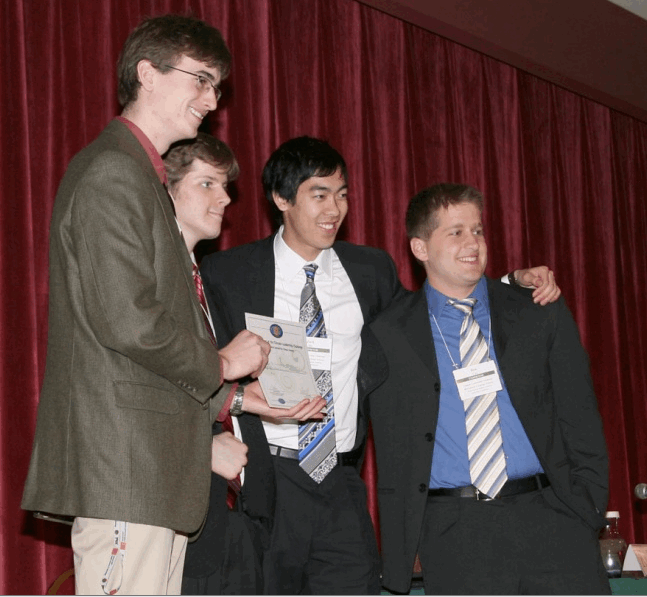Team:Wisconsin-Madison
From 2009.igem.org
| Line 19: | Line 19: | ||
---- | ---- | ||
| - | [[image: car.jpg|left| | + | [[image: car.jpg|left|300px|thumb|Driving on Biomass [[http://www.sciencemag.org/cgi/content/abstract/1168885v1 1]] ]]'''Ethanol vs. Bioelectricity''' |
A study conducted by Elliot Campbell of the University of California – Merced was released earlier this week that will have profound effects on world energy policies. The study modeled how far different types of cars could travel based on fuels acquired from the same area of land and biomass. The study considered two types of feedstock: corn and switchgrass, and different classes of cars: small car, midsize car, small SUV, and large SUV. The major finding was that biomass converted into electricity produced, on average, 81% more transportation miles and 108% more emissions offset compared to ethanol. The study criterion was based on miles per area cropland and greenhouse gas offset per cropland. In summary, electric means of converting biomass use a lot less land to produce the same amount of travel and did so while producing much less pollution. | A study conducted by Elliot Campbell of the University of California – Merced was released earlier this week that will have profound effects on world energy policies. The study modeled how far different types of cars could travel based on fuels acquired from the same area of land and biomass. The study considered two types of feedstock: corn and switchgrass, and different classes of cars: small car, midsize car, small SUV, and large SUV. The major finding was that biomass converted into electricity produced, on average, 81% more transportation miles and 108% more emissions offset compared to ethanol. The study criterion was based on miles per area cropland and greenhouse gas offset per cropland. In summary, electric means of converting biomass use a lot less land to produce the same amount of travel and did so while producing much less pollution. | ||
Revision as of 18:43, 9 June 2009
News
Wisconsin Updates
May 18, 2009
Finals are finished and our summer has begun! Time for research.
May 7, 2009

A study conducted by Elliot Campbell of the University of California – Merced was released earlier this week that will have profound effects on world energy policies. The study modeled how far different types of cars could travel based on fuels acquired from the same area of land and biomass. The study considered two types of feedstock: corn and switchgrass, and different classes of cars: small car, midsize car, small SUV, and large SUV. The major finding was that biomass converted into electricity produced, on average, 81% more transportation miles and 108% more emissions offset compared to ethanol. The study criterion was based on miles per area cropland and greenhouse gas offset per cropland. In summary, electric means of converting biomass use a lot less land to produce the same amount of travel and did so while producing much less pollution.
One example tested a small SUV run on switchgrass. One acre of switchgrass converted into bioelectricity allowed the car to travel 22,530 kilometers on the highway while the switchgrass converted into liquid ethanol only allowed the small SUV to travel 14,480 kilometers on the highway. Read more about this study in the paper you can download [http://www.sciencemag.org/cgi/content/abstract/1168885v1 here].
April 23, 2009
The 2008 Wisconsin iGEM Team has recently won the grand price in the Nelson Institute’s Climate Leadership Challenge. Their project increased the efficiency of Biofuels and is titled "Cellulosic Biofuels". Half of the $20,000 they earned will be donated to fund the 2009 Wisconsin iGEM Team! [http://badgerherald.com/news/2009/04/23/biofuel_improvement_.php Check out] the entire article in our local newspaper or look at their iGEM Wiki for more information: Wisconsin 2008
 "
"







